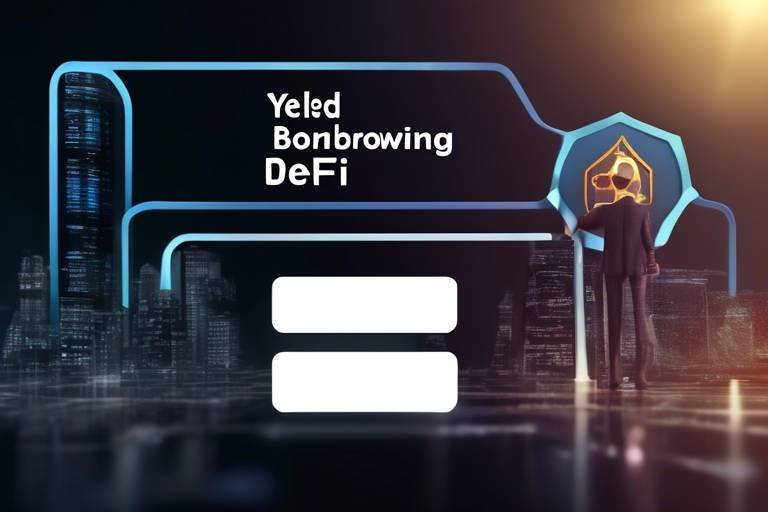Frax - The First Partially Algorithmic Stablecoin
In the ever-evolving landscape of cryptocurrency, Frax stands out as a groundbreaking innovation that marries the principles of stability and decentralization. Unlike traditional stablecoins that rely solely on collateral, Frax introduces a unique approach by being the first partially algorithmic stablecoin. This means that it utilizes a combination of collateralization and algorithmic mechanisms to maintain its value, specifically pegged to the US dollar. Imagine a ship navigating through turbulent waters; Frax is designed to keep its course steady, ensuring that users can rely on it without the wild fluctuations commonly associated with cryptocurrencies like Bitcoin or Ethereum.
The importance of stablecoins in the crypto ecosystem cannot be overstated. They serve as a bridge between the volatile world of cryptocurrencies and the stability of traditional fiat currencies. With Frax, users can enjoy the benefits of a stablecoin while also harnessing the potential for growth that comes with its algorithmic nature. This duality not only enhances user confidence but also attracts a diverse range of investors and traders looking for a reliable asset in the digital age.
As we delve deeper into the mechanics of Frax, it becomes evident that its success hinges on a delicate balance between collateralization and algorithmic control. This innovative model allows Frax to adjust its supply based on market demand, ensuring that it remains stable even in volatile conditions. Think of it as a finely tuned orchestra, where each instrument plays a crucial role in creating a harmonious symphony—Frax’s dual-token system orchestrates the relationship between the Frax token and the Frax Share token to maintain equilibrium.
The implications of Frax’s design extend beyond just its functionality; they also pave the way for a new era of stablecoins. As the market continues to mature, the demand for assets that can provide stability while also allowing for growth will only increase. Frax is at the forefront of this movement, positioning itself as a leader in the stablecoin space. With its unique features and innovative approach, it is not just another player in the market but a catalyst for change that could redefine how we view and use stablecoins in the future.
In summary, Frax represents a significant leap forward in the realm of stablecoins. By combining the strengths of traditional collateralized models with the dynamic capabilities of algorithmic adjustments, it offers a compelling alternative for users seeking stability without sacrificing the potential for appreciation. As we explore the various facets of Frax in the following sections, it will become clear that this stablecoin is not just a trend but a fundamental shift in the way we approach digital assets.

Understanding Stablecoins
Stablecoins are a fascinating category of cryptocurrencies designed to maintain a stable value, making them a crucial component of the digital currency ecosystem. Unlike traditional cryptocurrencies like Bitcoin and Ethereum, which can experience wild price fluctuations, stablecoins aim to provide a reliable and consistent value. Imagine having a digital dollar that you can use for transactions without worrying about whether it will lose half its value overnight—that's the beauty of stablecoins!
These digital assets are typically pegged to a stable reserve, such as a fiat currency like the US dollar, or commodities like gold. This pegging mechanism helps to stabilize their value. There are generally three types of stablecoins:
- Fiat-Collateralized Stablecoins: These are backed 1:1 by a fiat currency. For example, for every US dollar in reserve, one stablecoin is issued. Tether (USDT) and USD Coin (USDC) fall into this category.
- Crypto-Collateralized Stablecoins: These are backed by other cryptocurrencies, often over-collateralized to account for their volatility. An example is MakerDAO's DAI, which is pegged to the US dollar but backed by Ethereum and other crypto assets.
- Algorithmic Stablecoins: These do not rely on collateral but instead use algorithms to control the supply of the stablecoin, adjusting it based on market demand. This is where Frax shines, as it employs a unique mechanism to maintain its peg.
What sets stablecoins apart from regular cryptocurrencies is their predictability. This characteristic makes them ideal for various use cases, including remittances, payments, and as a safe harbor during market downturns. For instance, if you're a trader and the market is crashing, you might want to convert your volatile assets into a stablecoin to preserve your capital. This ability to switch to a stable asset quickly is one of the reasons stablecoins are gaining traction in the crypto space.
Another critical aspect of stablecoins is their role in the decentralized finance (DeFi) ecosystem. They provide liquidity and stability, allowing users to lend, borrow, and trade without the fear of sudden price shifts. This opens up a world of opportunities for both seasoned investors and newcomers alike. As the market continues to evolve, understanding the fundamentals of stablecoins becomes essential for anyone looking to navigate the complex landscape of cryptocurrencies.
In conclusion, stablecoins serve as a bridge between the volatile world of cryptocurrencies and the stability of traditional fiat currencies. They offer a unique solution to many of the challenges faced by crypto users, making them an essential part of the ongoing evolution of digital finance.
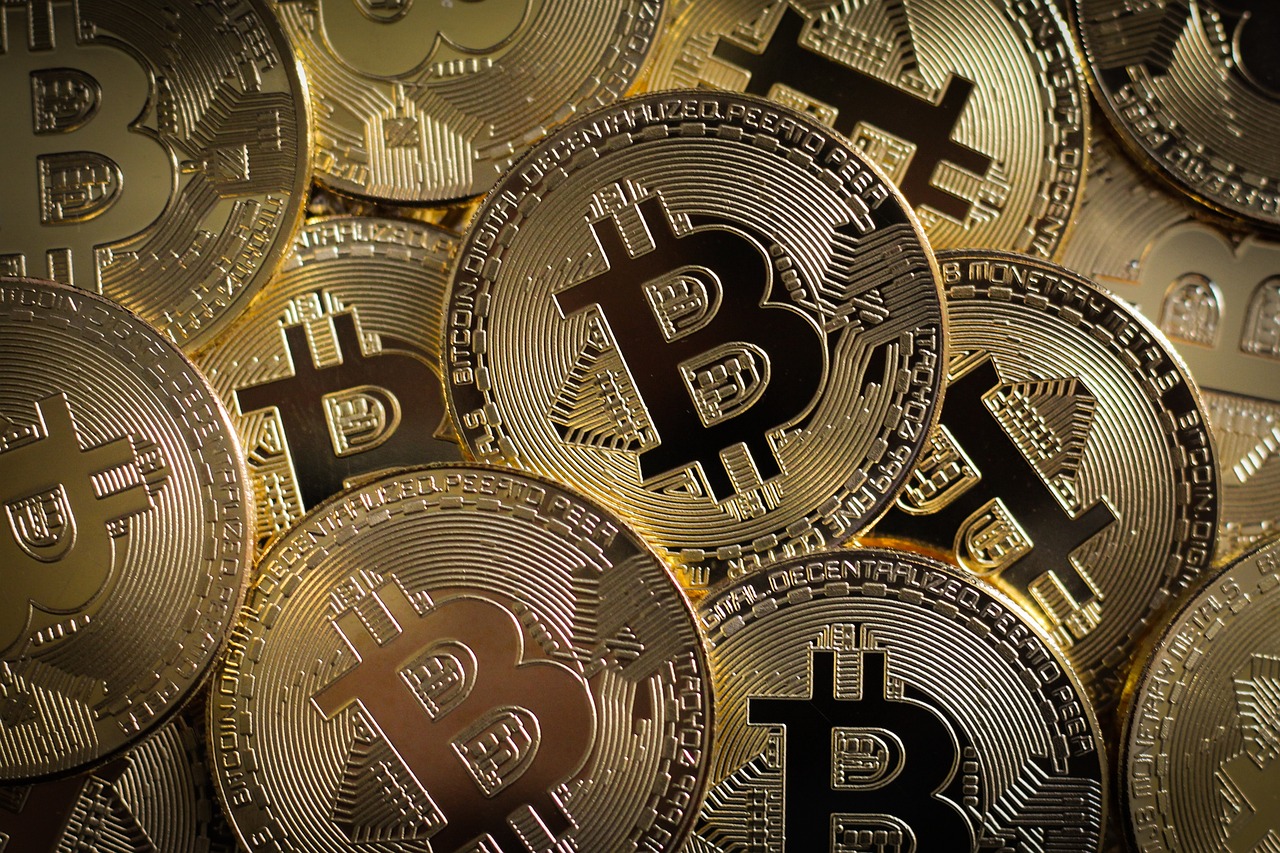
The Concept of Algorithmic Stability
Algorithmic stability is a revolutionary concept in the world of cryptocurrencies, aiming to maintain a stable value without relying solely on traditional collateralization methods. But what does this actually mean? In simple terms, it involves using sophisticated algorithms to adjust the supply of a cryptocurrency dynamically. This is particularly significant in the context of stablecoins, where maintaining a steady value is paramount. Unlike Bitcoin or Ethereum, which can experience extreme price fluctuations, algorithmic stablecoins like Frax strive for a more consistent valuation by leveraging technology to respond to market conditions.
At the heart of Frax’s innovation is its unique approach to stability. By employing a partially algorithmic model, Frax is able to maintain its peg to the US dollar while also allowing for some level of decentralization. This means that while some of its value is backed by collateral, the remainder is managed through algorithmic adjustments. This dual approach not only enhances resilience but also allows for greater flexibility in responding to market demands. Imagine a seesaw: on one side, you have the stability provided by collateral, and on the other, the dynamic adjustments made by algorithms. The goal is to keep that seesaw balanced, ensuring that the value remains stable even in turbulent market conditions.
Frax achieves this balance through a combination of two tokens: the Frax token (FXS) and the Frax Share token (FSH). The Frax token is the stablecoin itself, while the Frax Share token acts as a governance and utility token, allowing holders to participate in the decision-making processes that affect the protocol. This dual-token system is crucial for maintaining the algorithmic stability of the Frax ecosystem. When demand for the Frax token increases, the algorithm can issue new tokens to meet this demand, thereby stabilizing the price. Conversely, if demand decreases, the algorithm can reduce supply, preventing the price from falling too drastically.
To illustrate this concept further, let’s consider a simplified example. Suppose the price of the Frax token begins to rise above its target value of $1. The algorithm detects this increase and automatically creates additional Frax tokens, increasing supply to bring the price back down. On the flip side, if the price drops below $1, the algorithm can reduce the number of tokens in circulation, thus tightening supply and pushing the price back up. This self-regulating mechanism is what sets Frax apart from traditional stablecoins, which often rely solely on fiat reserves or other assets to maintain their value.
However, it's essential to recognize that while algorithmic stability offers numerous advantages, it also comes with its own set of challenges. The effectiveness of the algorithms depends heavily on accurate market data and timely responses to price fluctuations. If the algorithms fail to react quickly enough, the system could experience instability, leading to a loss of trust among users. Therefore, continuous improvement and monitoring of these algorithms are crucial for the long-term success of Frax and other algorithmic stablecoins.
In conclusion, the concept of algorithmic stability is a game-changer in the cryptocurrency landscape. By combining the strengths of both collateralized and algorithmic models, Frax is paving the way for a new generation of stablecoins that are not only resilient but also more adaptable to market dynamics. As we continue to explore this innovative approach, it’s clear that algorithmic stability will play a significant role in shaping the future of digital currencies.

The Mechanism Behind Frax
The Frax stablecoin operates on a revolutionary dual-token system that sets it apart from traditional stablecoins. At the heart of this mechanism are two distinct tokens: the Frax token (FRAX) and the Frax Share token (FXS). This innovative design not only aims to maintain a stable peg to the US dollar but also enhances the overall efficiency and flexibility of the stablecoin ecosystem.
So, how does this dual-token system work? The Frax token is the primary stablecoin that users trade and hold, while the Frax Share token serves a different purpose. Essentially, FXS acts as a governance token that gives holders a say in the protocol's future and helps absorb any volatility in the system. This means that when the price of FRAX deviates from its peg, the FXS token can be adjusted to stabilize the system. Think of it as a safety net that catches any unexpected fluctuations in value.
One of the most compelling aspects of Frax's mechanism is its partially algorithmic nature. Unlike fully collateralized stablecoins, which rely solely on reserves of fiat currency or other assets, Frax uses a combination of collateral and algorithmic supply adjustments. This allows for a more dynamic response to market conditions. For instance, if demand for FRAX increases, the system can mint new tokens to meet that demand, thereby maintaining the peg without the need for excessive collateralization.
Here's a quick breakdown of how the mechanism works:
- Collateralization: A portion of FRAX is backed by collateral, which can be either fiat or crypto assets. This ensures that there is tangible value supporting the stablecoin.
- Algorithmic Adjustments: The algorithm continuously monitors market conditions and adjusts the supply of FRAX accordingly. If the price goes above $1, the algorithm can mint more tokens; if it falls below, it can reduce supply.
- Governance through FXS: Holders of the Frax Share token can vote on key decisions affecting the protocol, including changes to the collateral ratio and other parameters.
This unique blend of collateralization and algorithmic control not only enhances stability but also promotes decentralization. With a portion of the supply being managed algorithmically, the reliance on a central authority is reduced, making Frax more resilient to market shocks. Moreover, this system allows for greater liquidity as the protocol can respond swiftly to changes in demand.
In summary, the mechanism behind Frax is a fascinating interplay of two tokens that work in tandem to achieve price stability while minimizing the risks associated with traditional stablecoins. With its innovative approach, Frax is paving the way for a new era of stablecoins that are not just stable but also adaptable to the ever-changing landscape of the cryptocurrency market.
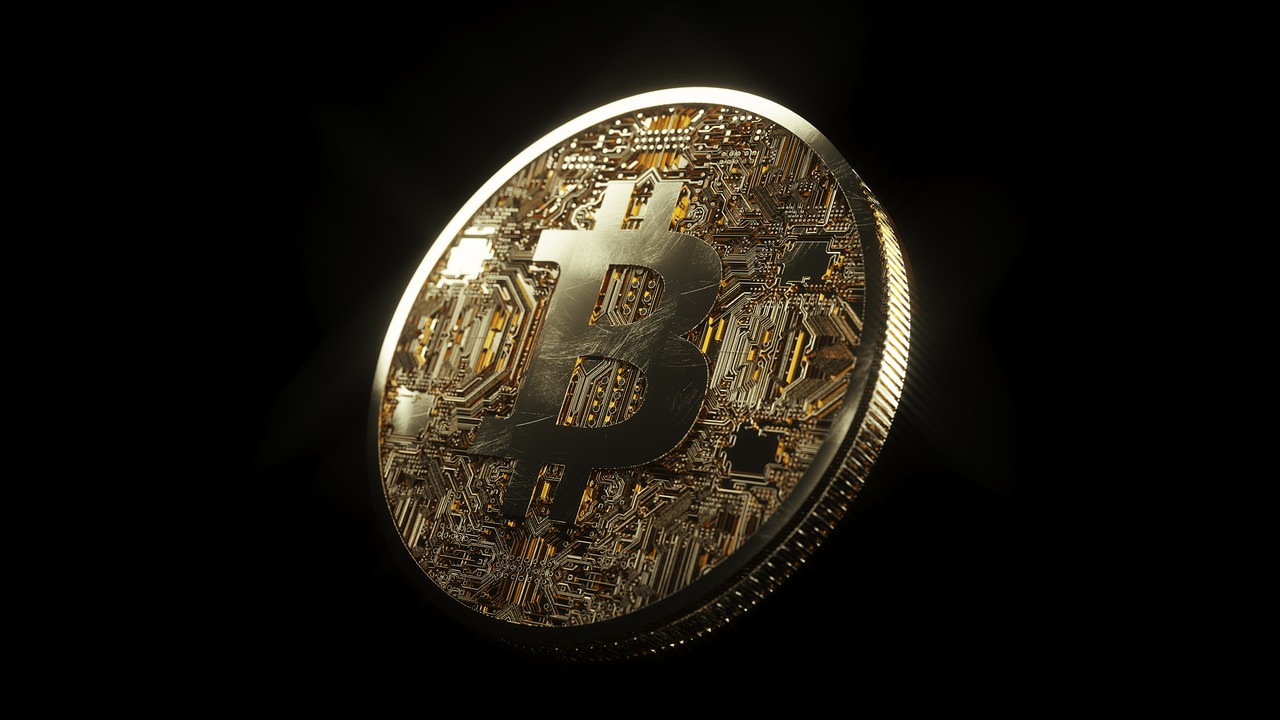
Collateralization and Decentralization
The world of cryptocurrencies is often characterized by its volatility, yet Frax emerges as a beacon of stability through its innovative partially collateralized model. This approach cleverly combines elements of both traditional collateralized stablecoins and algorithmic stablecoins, thereby enhancing decentralization while ensuring price stability. But what does this really mean for users and investors alike? Let's dive deeper.
At its core, collateralization refers to the backing of a stablecoin with assets, which in the case of Frax, is a mix of cryptocurrencies and algorithmic mechanisms. This hybrid model allows Frax to maintain its peg to the US dollar while also being less susceptible to the extreme fluctuations that often plague fully collateralized stablecoins. Imagine a seesaw where one side is weighed down by heavy assets while the other side is lightly balanced by algorithms – this is the essence of Frax's operational strategy.
Moreover, the decentralization aspect of Frax cannot be overlooked. Unlike traditional stablecoins that may rely heavily on a centralized entity to manage reserves and maintain stability, Frax distributes control across its community. This is achieved through its governance token, Frax Shares (FXS), which allows holders to participate in decisions regarding the protocol's future. Such a model not only empowers users but also mitigates risks associated with centralization, making it a more resilient option in the ever-evolving crypto landscape.
Furthermore, the unique setup of Frax's collateralization allows for a dynamic adjustment of the collateral ratio based on market conditions. This adaptability is crucial; it means that when demand surges, the system can adjust accordingly by increasing collateral, thus maintaining stability without the need for excessive reserves. Conversely, during periods of lower demand, the system can reduce collateral, allowing for greater liquidity and efficiency. This flexibility is akin to a well-tuned engine that adjusts its performance based on the road conditions it faces.
In summary, Frax's partially collateralized model stands out in the crowded stablecoin market by merging the best of both worlds – offering the security of collateralization with the benefits of decentralization. This innovative approach not only enhances user confidence but also paves the way for a more sustainable and inclusive cryptocurrency ecosystem.
- What is Frax? Frax is a partially algorithmic stablecoin designed to maintain a stable value while being less susceptible to market volatility.
- How does Frax achieve its stability? Frax employs a unique dual-token system and adjusts its collateralization ratio based on market conditions.
- What are the benefits of using Frax? Users can enjoy lower volatility, increased liquidity, and enhanced decentralization compared to traditional stablecoins.
- What challenges does Frax face? Regulatory scrutiny and intense market competition are significant challenges that Frax must navigate.

Market Dynamics and Demand
The success of Frax as a stablecoin is intricately tied to the ever-evolving landscape of market dynamics and demand. Understanding these factors is crucial for anyone looking to navigate the cryptocurrency waters. Think of the market as a living organism, constantly adapting to its environment. Just like the weather affects our daily lives, market trends and user demand significantly influence the value and adoption of Frax.
At the heart of this phenomenon lies the concept of liquidity. Liquidity refers to how easily an asset can be bought or sold without causing a drastic change in its price. For Frax, maintaining high liquidity is essential. When users can quickly convert Frax into other currencies or assets, it fosters trust and encourages more people to adopt the stablecoin. This creates a positive feedback loop: as more users adopt Frax, its liquidity improves, which in turn attracts even more users.
Another critical aspect to consider is market sentiment. In the world of cryptocurrencies, sentiment can shift on a dime, often driven by news, social media, or even influential figures. For instance, if a major financial institution announces support for Frax, it could lead to a surge in demand. Conversely, negative news could dampen interest. Thus, keeping a pulse on public sentiment is vital for predicting how Frax will perform in the marketplace.
Moreover, the utility of Frax plays a significant role in its demand. The more practical applications that Frax has—be it for trading, lending, or other financial services—the more attractive it becomes to potential users. This is where Frax's unique dual-token system shines, offering opportunities for users to engage with the ecosystem in various ways. By providing diverse use cases, Frax can appeal to a broader audience, which can help stabilize its value even amidst market fluctuations.
To illustrate the effects of market dynamics on Frax, consider the following table that outlines key factors influencing demand:
| Factor | Impact on Demand |
|---|---|
| Liquidity | Higher liquidity generally leads to increased demand as users can easily trade the asset. |
| Market Sentiment | Positive sentiment can drive demand up, while negative news can lead to a decline. |
| Utility | More use cases for Frax can attract a wider audience, increasing overall demand. |
In summary, the interplay of these factors creates a dynamic environment for Frax. The cryptocurrency market is akin to a rollercoaster ride—full of ups and downs, twists and turns. Just as riders must stay alert to enjoy the experience, investors and users of Frax must remain vigilant to navigate the complexities of market demand. By understanding these dynamics, they can better position themselves to take advantage of the opportunities that Frax offers.
- What is Frax? Frax is the first partially algorithmic stablecoin designed to maintain a stable value while leveraging both collateralization and algorithmic mechanisms.
- How does Frax maintain its peg to the US dollar? Frax uses a dual-token system that includes the Frax token and the Frax Share token, working together to ensure price stability.
- What are the benefits of using Frax? Frax offers lower volatility, increased liquidity, and a unique approach to stability compared to traditional stablecoins.
- What challenges does Frax face? Frax encounters challenges such as regulatory scrutiny and competition within the rapidly evolving stablecoin market.

Advantages of Using Frax
The world of cryptocurrencies is bustling with innovation, and among the many contenders, Frax stands out as a game-changer in the stablecoin arena. One of the most significant advantages of using Frax is its ability to offer lower volatility compared to traditional stablecoins. Unlike other stablecoins that are fully backed by reserves, Frax employs a unique partially algorithmic model that allows it to adapt to market conditions dynamically. This means that, as demand fluctuates, the supply of Frax can adjust accordingly, helping to maintain its peg to the US dollar with remarkable efficiency.
Another compelling benefit of Frax is its increased liquidity. Since Frax operates on a dual-token system, users can engage in various financial activities such as trading, lending, and borrowing more seamlessly. The Frax Share token, which is part of this system, incentivizes holders by providing them with governance rights and a share of the protocol's fees. This not only enhances user engagement but also fosters a community-driven approach to governance, which is a refreshing take in the crypto space.
Moreover, Frax's decentralized nature is a significant draw for many users. By combining the benefits of both collateralized and algorithmic stablecoins, it ensures that no single entity has control over the supply, thus promoting a fairer distribution of power among its users. This decentralization not only aligns with the core ethos of cryptocurrencies but also reduces the risks associated with centralization, such as potential hacks or manipulations.
In addition to these advantages, Frax also offers a transparent mechanism for users to track their investments. The protocol is built on smart contracts that are open-source, allowing anyone to verify the underlying algorithms and collateralization ratios. This transparency builds trust and encourages more users to adopt Frax as a reliable stablecoin alternative.
Lastly, the community and ecosystem surrounding Frax is rapidly expanding. As more platforms begin to adopt Frax, its utility increases, which in turn attracts more users. This creates a positive feedback loop, where the growth of the ecosystem enhances the value and stability of the Frax token itself. In a world where many stablecoins struggle to maintain their relevance, Frax’s innovative approach positions it as a frontrunner in the race for stablecoin supremacy.
- What makes Frax different from other stablecoins?
Frax combines algorithmic and collateralized mechanisms, allowing it to maintain stability while adapting to market conditions. - How does the dual-token system work?
The Frax token maintains the stablecoin's peg, while the Frax Share token provides governance rights and a share of the protocol's fees. - Is Frax decentralized?
Yes, Frax is designed to promote decentralization, reducing the risks associated with centralized control. - How can I use Frax?
You can use Frax for trading, lending, and borrowing across various DeFi platforms.
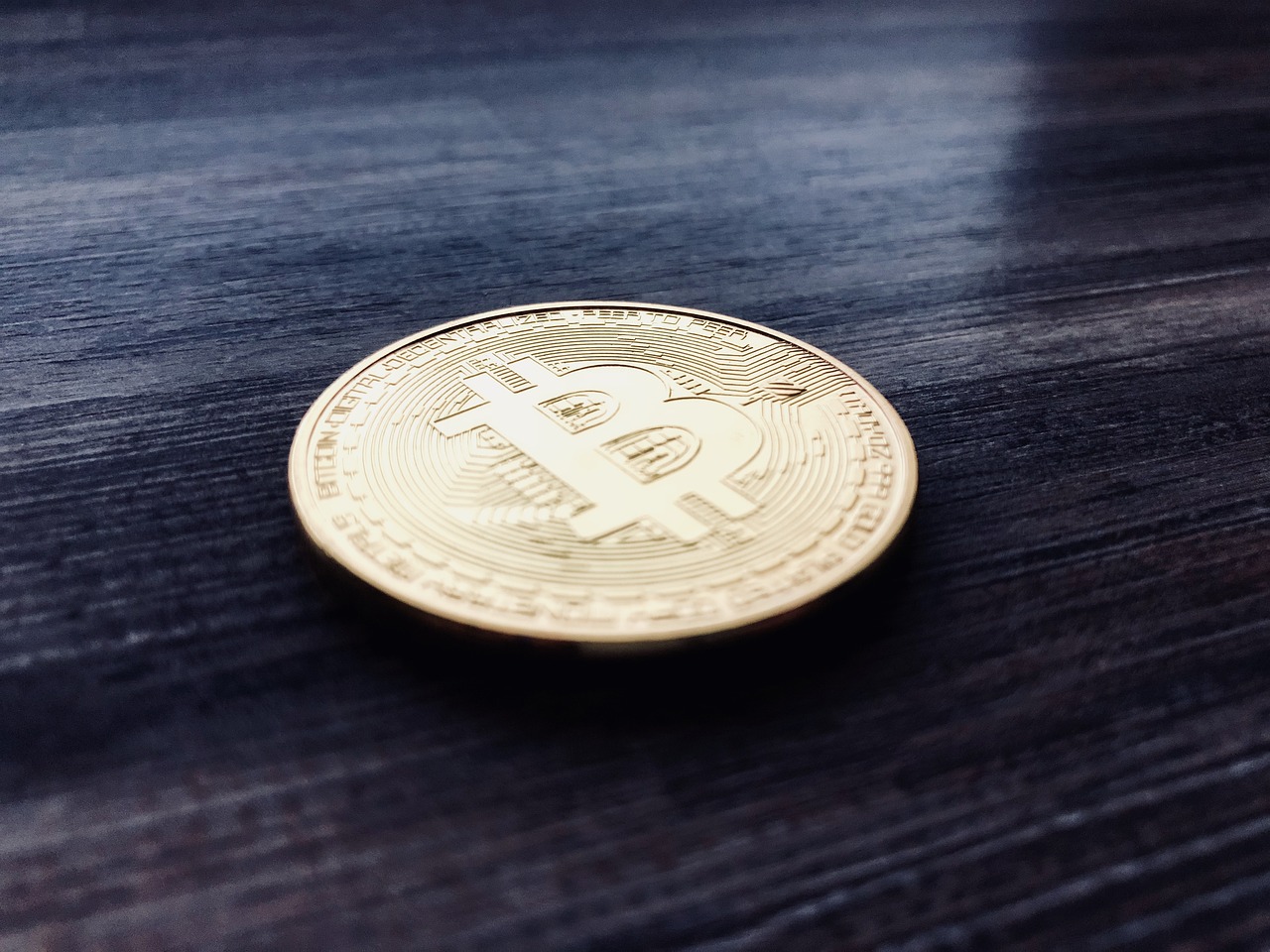
Challenges Faced by Frax
Despite its innovative approach, Frax is not without its challenges. As the cryptocurrency landscape continues to evolve, Frax faces several hurdles that could impact its growth and adoption. One of the most significant challenges is the increasing regulatory scrutiny surrounding stablecoins. Governments and regulatory bodies worldwide are beginning to take a closer look at how these digital assets operate, and Frax must navigate this complex environment to ensure compliance while maintaining its unique value proposition.
Regulatory bodies are particularly concerned about issues such as consumer protection, financial stability, and the potential for illicit activities. As a partially algorithmic stablecoin, Frax's operational model may raise questions about transparency and risk management. For instance, how does Frax ensure that its algorithmic mechanisms do not lead to unintended consequences, such as drastic price fluctuations? Addressing these concerns is crucial for building trust among users and investors.
Another significant challenge is the competition within the stablecoin market. With numerous players vying for dominance, Frax must find ways to differentiate itself. Established stablecoins like Tether (USDT) and USD Coin (USDC) already have a strong foothold in the market, boasting high liquidity and widespread acceptance. To compete effectively, Frax needs to leverage its unique features, such as its dual-token system, while also enhancing its marketing strategies to attract a broader audience.
Market dynamics also play a vital role in the success of Frax. The demand for stablecoins fluctuates based on various factors, including overall market sentiment, economic conditions, and user preferences. For example, during periods of high volatility in the cryptocurrency market, users may flock to more established stablecoins, leaving newer options like Frax at a disadvantage. Understanding these dynamics is essential for Frax to anticipate market trends and adapt accordingly.
To summarize, the challenges faced by Frax can be categorized into three primary areas:
- Regulatory Scrutiny: Navigating complex regulations while maintaining operational flexibility.
- Market Competition: Standing out in a crowded marketplace filled with established players.
- Market Dynamics: Adapting to changing demand and user preferences in a volatile environment.
Addressing these challenges will require a concerted effort from the Frax team, including strategic partnerships and continuous innovation. While the road ahead may be fraught with obstacles, the potential for Frax to redefine the stablecoin landscape remains strong.
- What is Frax? Frax is the first partially algorithmic stablecoin that aims to provide a stable value while utilizing unique mechanisms for price stability.
- How does Frax maintain its peg to the US dollar? Frax employs a dual-token system that includes the Frax token and the Frax Share token to help maintain its peg.
- What challenges does Frax face? Frax faces regulatory scrutiny, competition from established stablecoins, and the need to adapt to market dynamics.
- Is Frax decentralized? Yes, Frax's partially collateralized model enhances decentralization while ensuring stability.
- How can I buy Frax? Frax can be purchased on various cryptocurrency exchanges where it is listed.
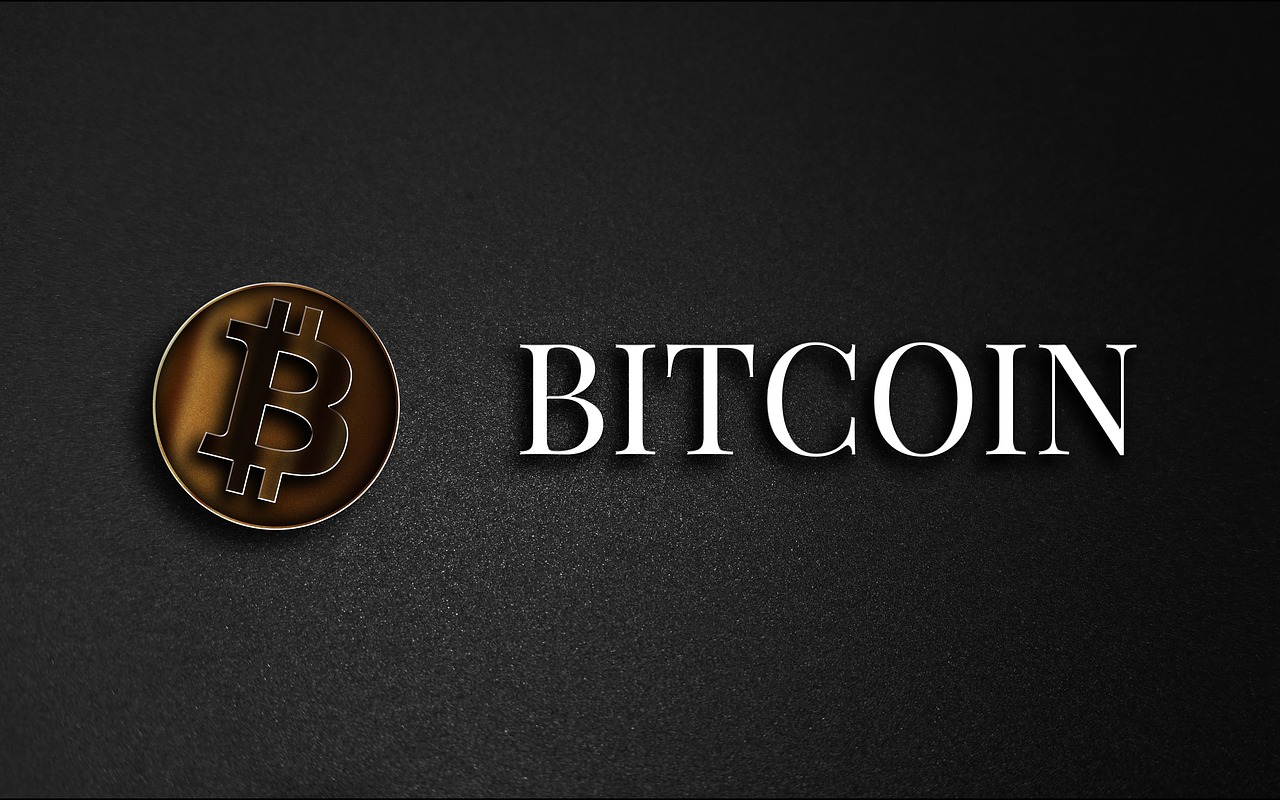
Regulatory Considerations
As the cryptocurrency landscape continues to evolve, stablecoins like Frax are increasingly coming under the microscope of regulatory bodies. This scrutiny is primarily due to the rising popularity of stablecoins and their potential impact on the financial system. Regulatory considerations play a crucial role in shaping the future of Frax and similar digital assets. So, what does this mean for the average user and investor?
First and foremost, regulatory frameworks vary significantly across different jurisdictions. In some countries, regulators are moving towards establishing clear guidelines for stablecoins, while others are still grappling with how to classify and regulate these digital assets. For instance, in the United States, the Financial Stability Oversight Council (FSOC) has been tasked with assessing the risks posed by stablecoins and determining whether they should be classified as securities or commodities.
This classification can have profound implications for Frax. If deemed a security, it would be subject to stricter regulations, potentially impacting its liquidity and user adoption. Conversely, if classified as a commodity, Frax may benefit from a more favorable regulatory environment, allowing it to operate with greater flexibility. In this regard, the regulatory landscape is akin to a double-edged sword—offering both challenges and opportunities.
Moreover, regulatory compliance is essential for gaining the trust of users and institutional investors. As Frax aims to position itself as a reliable and stable digital asset, it must navigate these regulatory waters carefully. This includes implementing robust Know Your Customer (KYC) and Anti-Money Laundering (AML) practices to ensure compliance with local laws. By doing so, Frax can enhance its reputation and attract a wider user base.
To illustrate the potential regulatory challenges faced by Frax, consider the following table outlining key regulatory considerations:
| Regulatory Aspect | Implication for Frax |
|---|---|
| Classification as Security or Commodity | Affects regulatory compliance and operational flexibility |
| KYC/AML Compliance | Increases trust among users and institutional investors |
| International Regulations | May limit market access in certain jurisdictions |
| Taxation Policies | Impacts user adoption and transaction volumes |
In summary, while Frax presents an innovative approach to stablecoins, it is not immune to the complexities of the regulatory landscape. The ongoing dialogue between regulators and the cryptocurrency community will be pivotal in shaping the future of Frax and its acceptance in the broader financial ecosystem. As users, it’s essential to stay informed about these developments, as they could significantly influence your investment decisions and the overall stability of the Frax ecosystem.
- What are the main regulatory challenges facing Frax? Regulatory classification, compliance with KYC/AML laws, and international regulations are primary challenges.
- How does regulatory scrutiny affect user trust in Frax? Compliance with regulations can enhance trust among users and investors, making Frax more appealing.
- What steps is Frax taking to ensure compliance? Frax is implementing robust KYC/AML protocols and engaging with regulators to navigate the evolving landscape.

Competition in the Stablecoin Market
The stablecoin market is akin to a bustling marketplace, filled with various vendors all vying for the attention of eager customers. In this vibrant ecosystem, Frax stands out, but it’s not without its competition. Major players like Tether (USDT), USD Coin (USDC), and DAI have established themselves as the go-to stablecoins for many users, each with unique features and advantages. So, how does Frax differentiate itself in such a crowded space?
One of the most significant aspects of Frax's competitive edge lies in its partially algorithmic model. Unlike traditional stablecoins that are fully backed by reserves, Frax utilizes a dual-token system that combines the benefits of collateralization with algorithmic supply adjustments. This innovative approach not only enhances liquidity but also mitigates volatility, allowing users to enjoy a more stable experience. Imagine having the best of both worlds—security from collateral and the dynamic adaptability of algorithms. That's what Frax aims to deliver!
Furthermore, the demand for stablecoins is growing rapidly, driven by the increasing interest in decentralized finance (DeFi) and the need for stable value in volatile markets. As more users flock to platforms that utilize stablecoins, the competition intensifies. Frax is strategically positioned to capture this emerging demand by offering lower transaction fees and faster processing times compared to its competitors. For instance:
| Stablecoin | Transaction Fees | Processing Speed |
|---|---|---|
| Tether (USDT) | 0.1% | 5-10 minutes |
| USD Coin (USDC) | 0.1% | 5-10 minutes |
| DAI | 0.5% | 10-15 minutes |
| Frax | 0.03% | Instant |
Moreover, the community-driven nature of Frax is another factor that sets it apart. By actively involving users in governance and decision-making, Frax fosters a sense of ownership and loyalty that can be hard to replicate. This is crucial in a space where trust and transparency are paramount. Users want to feel that their voices matter, and Frax provides that platform.
However, the competition isn't just about features and fees. Brand recognition and user trust play significant roles in the adoption of stablecoins. Established players like USDT and USDC benefit from their long-standing presence in the market, which can make it challenging for newer entrants like Frax to gain traction. Nevertheless, the innovative mechanisms and community engagement strategies employed by Frax are proving to be effective in carving out its niche.
In conclusion, while Frax faces stiff competition in the stablecoin market, its unique approach to stability, combined with lower fees and a strong community focus, positions it well to thrive. As the market continues to evolve, it will be fascinating to see how Frax and its competitors adapt to the changing landscape and what new innovations will emerge.
- What is Frax?
Frax is the first partially algorithmic stablecoin that aims to provide a stable value while utilizing both collateralization and algorithmic adjustments. - How does Frax maintain its peg to the US dollar?
Frax uses a dual-token system to manage supply and demand effectively, ensuring its price remains stable against the US dollar. - What are the advantages of using Frax over other stablecoins?
Frax offers lower transaction fees, faster processing times, and a community-driven governance model, making it an attractive option for users. - What challenges does Frax face?
Frax encounters regulatory scrutiny and competition from established stablecoins, which could impact its growth and adoption.
Frequently Asked Questions
- What is Frax and how does it work?
Frax is the first partially algorithmic stablecoin that combines the stability of traditional stablecoins with the innovative mechanisms of algorithmic models. It operates on a dual-token system, where the Frax token maintains its peg to the US dollar through a combination of collateralization and algorithmic adjustments to supply.
- What are the benefits of using Frax over other stablecoins?
Frax offers several advantages, such as lower volatility and increased liquidity compared to traditional stablecoins. Its unique mechanism allows for more responsive adjustments to market dynamics, making it an attractive option for users seeking a stable and efficient currency in the crypto space.
- How does Frax ensure its price stability?
Frax employs a partially collateralized model that uses algorithms to control its supply. By adjusting the amount of collateral backing the Frax token, it can respond to changes in demand and market conditions, helping to maintain its peg to the US dollar effectively.
- What challenges does Frax face in the market?
Despite its innovative approach, Frax faces challenges such as regulatory scrutiny and intense competition within the rapidly evolving stablecoin market. These factors could impact its adoption and long-term viability, but the team behind Frax is actively working on strategies to navigate these hurdles.
- How does Frax differentiate itself from other stablecoins?
Frax sets itself apart through its unique dual-token system and its blend of collateralized and algorithmic mechanisms. This combination allows for greater flexibility and responsiveness to market conditions, making it a compelling choice in a crowded market.
- What is the role of the Frax Share token?
The Frax Share token plays a crucial role in the ecosystem by incentivizing holders and helping to manage the supply of the Frax token. It allows participants to stake and earn rewards, contributing to the overall stability and functionality of the Frax stablecoin system.
- Is Frax compliant with regulations?
As the stablecoin market becomes increasingly scrutinized by regulatory bodies, Frax is committed to adhering to relevant regulations. The team is actively engaging with regulators to ensure compliance while maintaining the decentralized nature of the platform.










